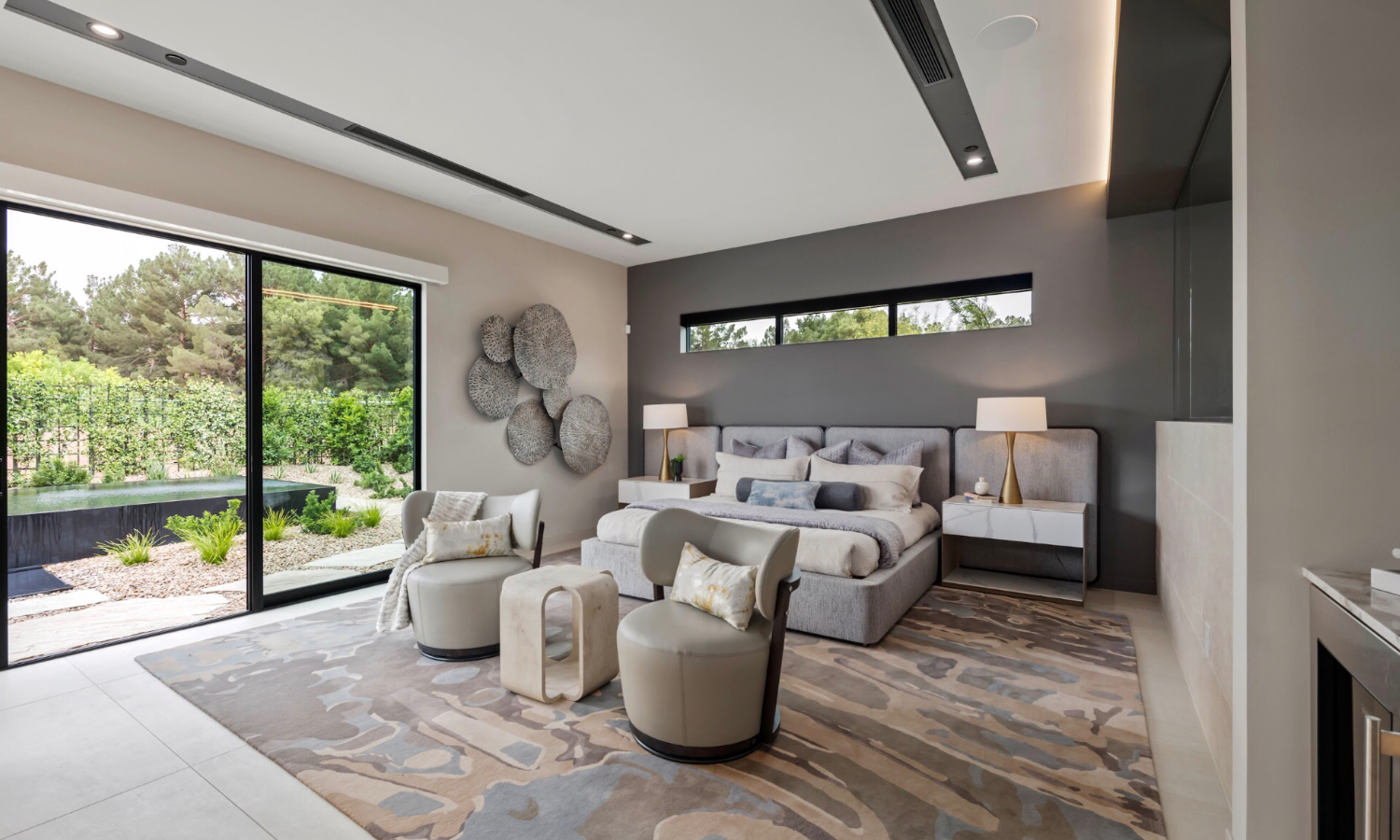By Beth Weitzman
Photos courtesy of Blue Heron
The impact of design on well-being is undeniable. In his 1984 book, “Biophilia,” Edward O. Wilson introduced the hypothesis that humans possess a natural inclination towards life and a desire to connect with living beings. In the post-pandemic era, the integration of green spaces, seamless indoor-outdoor transitions, and sustainable designs in homes and workplaces has shifted from simple preference to a level of high desirability.
In our conversation with Hedy Woodrow, president of Blue Heron’s Lifestyles Design Studio, we explored the intricacies and advantages of biophilic design. For the past two decades, Blue Heron has been at the forefront of creating architecturally significant homes that showcase state-of-the-art desert biophilic design elements. The Lifestyles Design Studio is a crucial component of the esteemed design-driven development firm, renowned for its exceptional custom and pre-designed homes and boutique communities in Southern Nevada. Guided by its Vegas Modern™ design philosophy, the firm unravels the intricate language of human connection with the environment. In formulating the blueprint for elevated living, Blue Heron engineers novel and exceptional experiences, meticulously crafted with a deep understanding of both physical and human nature.
 Woodrow emphasizes that biophilic design surpasses merely integrating nature into spaces; it meticulously weaves indoor and outdoor environments, engaging the senses and emotions.
Woodrow emphasizes that biophilic design surpasses merely integrating nature into spaces; it meticulously weaves indoor and outdoor environments, engaging the senses and emotions.
“Creating interior design that incorporates the natural environment allows one to tap into the senses,” she notes, highlighting the importance of captivating eyes while fostering relaxation and comfort.
Biophilic design lies at the core of Blue Heron’s ethos.
“The DNA of Blue Heron is grounded in the ability to transition from outdoors to indoors and vice versa,” emphasizes Woodrow. Accolades, including Platinum LEED and Emerald certifications for select homes, showcase their dedication to green living.
Referring to a 2019 Harvard study, Woodrow underscores the tangible well-being benefits of biophilic design, stating, “incorporating plants, natural light, and water features can reduce stress and enhance mood.” She further adds, “Bringing in the outdoors through succulents, stones, and accessories reflective of the natural environment is key to creating interior spaces true to biophilic design.” Fireplaces, Woodrow notes, are another element of biophilic design that go beyond mere aesthetics. They evoke a sense of well-being, promoting natural warmth, relaxation, and stress reduction.
Woodrow views design as a holistic commitment to health and wellness, meticulously planning spaces, selecting colors, and positioning furniture to optimize views and elevate the overall home experience. She emphasizes the pivotal role of the environment in residents’ mental well-being, anchored in the Attention Restoration Theory.
“When looking at a room and assessing the space, identifying key focal areas is critical to ensuring the productivity of the space,” Woodrow explains.
As Woodrow underscores, biophilic design complements and softens the raw aspects of brutalist design.
“By introducing natural elements, textures, and greenery, we create inviting and human-centric environments,” she emphasizes.
Looking ahead, Woodrow reveals that Blue Heron is working on exciting projects showcasing the evolution of biophilic design.
“Upcoming model homes focus on a warm, move-in ready approach, with fresh floral and succulent arrangements that incorporate the outdoor elements Blue Heron is known for,” she shares.
Woodrow acknowledges the continuous growth of biophilic design.
“Staying abreast of enduring trends, textures, and creating moments of discovery throughout one’s experience in the home will be an important aspect of continuing to evolve,” she notes, highlighting the dynamic and forward-thinking nature of Blue Heron’s approach.
As Woodrow underscores, the future of design is poised to build on the sensory experiences within each home.

“Our sensory garden designs create a multi-sensory environment that allows individuals to connect with nature through touch, smell, sight, and, in certain instances, taste and sound experiences.”
To stay up-to-date on the latest trends and innovations, Woodrow and her team study various industries and observe the environment, translating inspiration into transformative interiors.
“The colors, textures, and layering of various items in other industries and the environment inspire us to create new interiors with each home,” Woodrow emphasizes.
Blue Heron’s Lifestyle Design Studio goes far beyond biophilic design to enhance well-being, skillfully incorporating sustainability principles.
”It is a skill set that can transform the look of a home to incorporate sustainability into a luxurious space, even when some aspects of sustainability can seem basic,” Woodrow explains, shedding light on the studio’s commitment to blending opulence with environmental consciousness.
“We always look for options that allow for a non-toxic approach to our designs, because we believe that we have a responsibility to our environment,” she explains.
She emphasizes staying true to the brand’s DNA and striving to better the planet through mindful design as a guiding principle that will continue to elevate each project.




